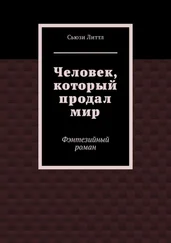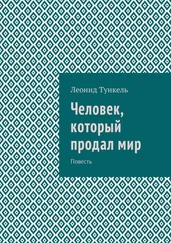The 800th anniversary of her birth produced a plethora of biographies: Albrecht & Atzbach, Elisabeth von Thuringen; Ohler, Elisabeth von Thiiringen; Zippert & Jost, Hingabe und Heiterkeit; Reber, Elizabeth von Thiiringen.
Reich, Select Documents pp. 637–642; Roman, Austria-Hungary p. 480.
Sinor, Hungary pp. 57–60; James Ross Sweeney, 'The Decretal Intellecto and the Hungarian Golden Bull of 1222,' in Album Elemer Mdlyusz (1976) pp. 89–96.
Rady et al, Gesta Hungarorum I Epistola in Miserabile Carmen pp. 142–143; Szentpetery, Scriptores rerum Hungaricarum ii. p.555.
Engel, Realm of St Stephen pp. 91–93.
Rady et al, Gesta Hungarorum,' Epistola in Miserabile Carmen pp. 144–145; Martyn C. Rady, Nobility, Land and Service pp. 179–182.
Rady et al, Gesta Hungarorum,' Epistola in Miserabile Carmen pp. 144–147.
Engel, Realm of St Stephen p. 98.
Nora Berend, At the Gate of Christendom pp. 68–73; Robert C. Wolff, 'The "Second Bulgarian Empire": Its Origin and History to 1204,' Speculum 24 (1949) pp. 167–206; A. Lognon, 'Les Toucy en Orient et en Italie au XHIe siecle,' Bulletin de la Societe des sciences historiques et naturelles de I'Yonne 96 (1957) pp. 33–43.
Согласно отечественной историографии, дата сражения — 31 мая 1223 года. — Прим. пер .
Monumenta Germaniae Historica, Scriptores 9 p. 640; Gockenjam & Sweeney, Mongolensturm pp. 142–145, 238.
Rady et al, Gesta Hungarorum,' Epistola in Miserabile Carmen pp. 138–139.
Berend, At the Gate pp. 85–95.
Ferdinandy, Tschingis Khan pp. 139–144.
Rady et al, Gesta Hungarorum I Epistola in Miserabile Carmen p. 141.
Rady et al, Gesta Hungarorum I Epistola in Miserabile Carmen p. 141.
Sinor, Hungary p. 69.
Veszpremy & Schaer, Simon of Keza, p. 157.
Rady et al, Gesta Hungarorum I Epistola in Miserabile Carmen pp. 140–141, 154–155.
Sinor, Hungary p. 70.
Veszpremy & Schaer, Simon of Keza pp. 145–147.
Kosztolnyik, Hungary pp. 151–216; Bezzola, Mongolen in abend-landischer Sicht pp. 76–81.
Matthew Paris, Chronica Majora iv pp. 119–120.
Gockenjan & Sweeney, Mongolensturm pp. 150, 237.
Sinor, Hungary p. 70.
Strakosch-Grassmann, Mongolen in Mitteleuropa, pp. 9, 42; Bezzola, Mongolen in abendlandischer Sicht p. 52; Matthew Paris, Chronica Majora iv pp. 270–277 (esp. p. 274).
Rady et al, Gesta Hungarorum I Epistola in Miserabile Carmen pp. 156–157, 164–165.
Rady et al, Gesta Hungarorum I Epistola in Miserabile Carmen pp. 156–159; Matthew Paris, Chronica Majora iv pp. 112–119.
Rady et al, Gesta Hungarorum I Epistola in Miserabile Carmen pp. 172–175.
Thomas T. Allsen, 'Cumanica IV: The Cumano-Qipcaq Clans and Tribes,' Archivum Eurasiae Medii Aevi 9 (1997) pp. 97–122 (at pp. 102–105); Gockenjan & Sweeney, Mongolensturm pp. 150–159,176–179.
Kubinyi, Anfange Ofens pp. 16–17.
Sinor, Hungary pp. 70–71.
D. O. Morgan, 'The Mongol Armies in Persia,' Der Islam 56 (1976) pp. 81–96; Chambers, Devil's Horsemen p. 93.
Liddell Hart, Great Captains Unveiled p. 25.
Some idea of the terrain can be gathered from Florin Curta, 'Transylvania around ad 1000,' in Urbanczyk, Europe around the Year 1000 pp. 141–165. Because of the confusing chronology used in many of the primary sources, it is not clear if the sack of Alba Iulia ('the white city') in Transylvania happened at this point, or whether it was bypassed and the Mongols then doubled back to raze it in the period of total destruction after Mohi. For more on the role of Transylvania during the Mongol invasion see Laszlo Makkai, 'Transylvania in the Medieval Hungarian Kingdom (896–1526),' in Kopeczi, Transylvania I рр. 331–524. For a more modern description of Alba Iulia see Leigh Fermor, Betweeen the Woods and the Water p. 138.
Rady et al, Gesta Hungarorum,' Epistola in Miserabile Carmen pp. 161–162.
Peric et al, Thomas of Split, History p. 259; J. R. Sweeney, "'Spurred on by the Fear of Death": Refugees and Displaced Persons during the Mongol Invasion of Hungary,' in Gervers & Schlepp, Nomadic Diplomacy pp. 34–62 (at p. 42).
Rachewiltz, In the Service p. 24.
Rady et al, Gesta Hungarorum,' Epistola in Miserabile Carmen pp. 166–167.
Strakosch-Grassmann, Mongolen in Mitteleuropa, pp. 91–98, 153–158; Sedlar, East Central Europe pp. 210–221.
Rady et al, Gesta Hungarorum I Epistola in Miserabile Carmen pp. 200–201.
Rady et al, Gesta Hungarorum I Epistola in Miserabile Carmen pp. 178–179; d'Ohsson, Histoire II pp. 141–142.
Grousset, Empire p. 266.
Grousset, Empire pp. 594–595. On this point see also Strakosch-Grassmann, Mongolen in Mitteleuropa pp. 78–79.
Grousset, Empire pp. 594–595. On this point see also Strakosch-Grassmann, Mongolen in Mitteleuropa pp. 99–101.
Rady et al, Gesta Hungarorum I Epistola in Miserabile Carmen pp. 168–169.
Rady et al, Gesta Hungarorum I Epistola in Miserabile Carmen pp. 168–169.
Hristo Dimitrov, 'Uber die bulgarisch-ungarischen Beziehungen, 1218–1255,' Bulgarian Historical Review 25 (1997) pp. 3–27 (at pp. 16–19); Matthew Paris, Chronica Majora iv pp. 113, 179; Gockenjan & Sweeney, Mongolensturm pp. 149–150; Strakosch-Grassmann, Mongolen in Mitteleuropa pp. 12–13, 91.
Hristo Dimitrov, 'Uber die bulgarisch-ungarischen Beziehungen, 1218–1255,' Bulgarian Historical Review 25 (1997) pp. 3–27 (at pp. 16–19); Matthew Paris, Chronica Majora iv pp. 113, 179; Gockenjan & Sweeney, Mongolensturm pp. 149–150; Strakosch-Grassmann, Mongolen in Mitteleuropa pp. 78–79.
Carey, Warfare pp. 124–128. But extreme caution is needed in this debate. Some of the very best sources are adamant that the Mongols were outnumbered two to one; see JB I p. 270; Gockenjan & Sweeney, Mongolensturm p. 251.
Carey, Warfare pp. 124–128. But extreme caution is needed in this debate. Some of the very best sources are adamant that the Mongols were outnumbered two to one; see JB I p. 270; Gockenjan & Sweeney, Mongolensturm p. 240.
Читать дальше
Конец ознакомительного отрывка
Купить книгу

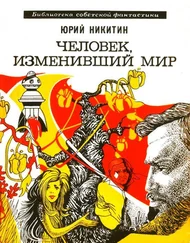

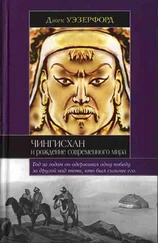
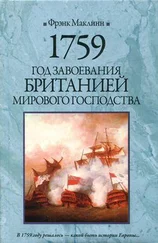

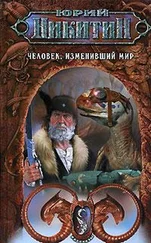
![Ксения Чепикова - Человек, научивший мир читать [История Великой информационной революции]](/books/388624/kseniya-chepikova-chelovek-nauchivshij-mir-chitat-ist-thumb.webp)
